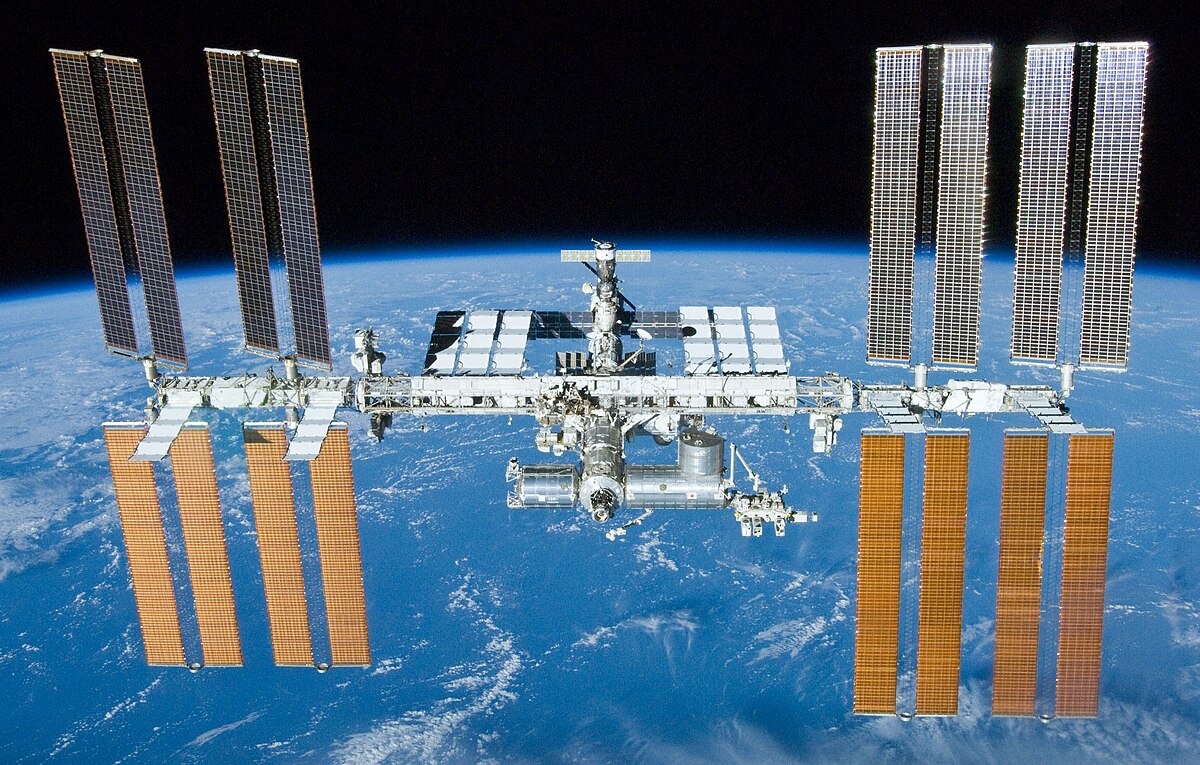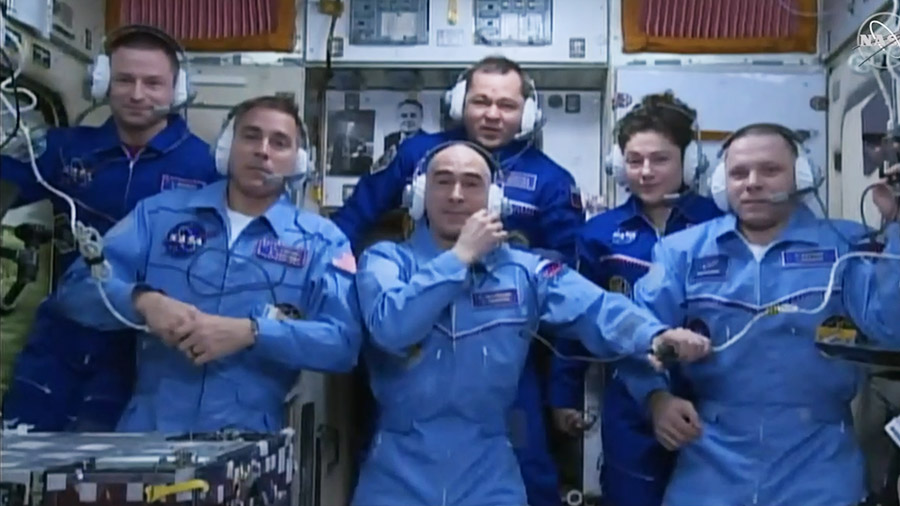
Some of the first prolonged life-in-orbit stations such as Skylab and the Salyut stations were monolithic in design, with the Soviet Mir station being the first to be built out of different modules. This meant that Mir could be designed with a specific purpose in mind, and be assembled piece by piece in the atmosphere without the need of pre-assembly or loading all of the equipment into one module. The Mir station orbited 3 times the intended time, and participating in several international missions including in the Shuttle-Mir missions to train astronauts for life on the ISS, which was in planning at that time. Mir was deorbited in 2001.
 |
| Mir Space Station |
President Regan proposed in 1984 that America developed an Earth orbiting station, and in ‘88 invited Canada, Japan, European Space Agency, and five years later, Russia. Russia partnership also provided a module from the Mir 2 station that was launched into orbit. The American Unity module launched in December 4, 1998 and docked with Zarya module with the aid of the Shuttle Endeavour team. This marked the beginning of construction of the ISS, which would last 13 years. In late 2000, the station was ready for humans to board, and have been kept occupied since then.
The ISS is the largest spacecraft ever built, and with the solar panels included, being about the size of a football field and with an interior being larger than a 6 bedroom house. It has hosted 230 individuals from 18 different countries and conducted over 2,500 scientific experiments.
 |
| Latest Crew on the ISS |
You can see the space station too! The next date that the ISS will be visible from Los Altos is for 3 minutes on Thursday, April 23 at 5:34 AM (if you wish to get up that early) and will appear 10˚ above south and will fade out at 14˚ above east-southeast.
Your blog was not only interesting, but also easy to comprehend. I decided to research further into finding the space station in the sky. I found that the station can rival the planet Venus in terms of brightness and can be seen as a moving bright light in the night sky. A telescope is not needed to view the space station due to its powerful brightness. It flies at an average altitude of 248 miles above Earth.
ReplyDeletehttps://www.space.com/16748-international-space-station.html
Nice blog post! I really liked reading this as I learned a lot more about the ISS and just how big it really is. For a better size comparison, I found that it has the same pressurized volume as a Boeing 747 and that it is 4 times larger than the Russian space station and 5 times larger than the US station Skylab. It is also the single most expensive object ever built, totaling 120 billion for the cost of the ship. The ISS is really a marvel of human engineering and really shows that life in space may be possible in the future.
ReplyDeletehttps://www.mentalfloss.com/article/59662/15-out-world-facts-about-international-space-station